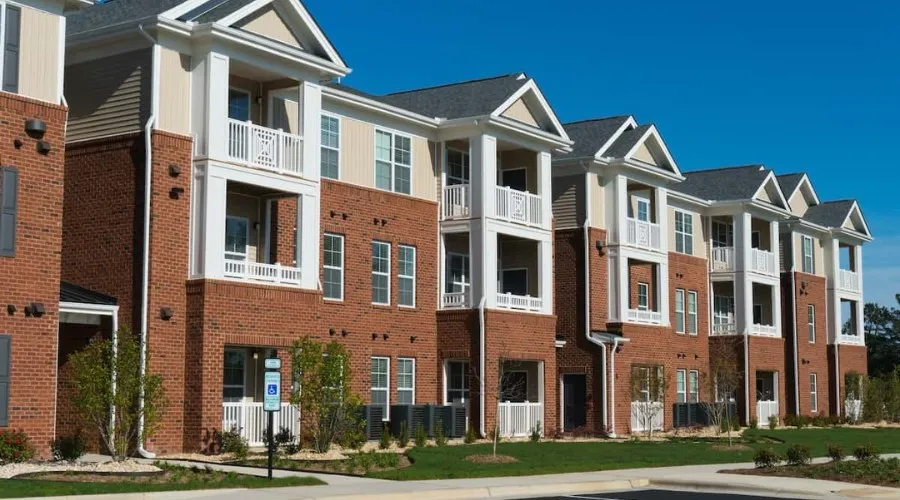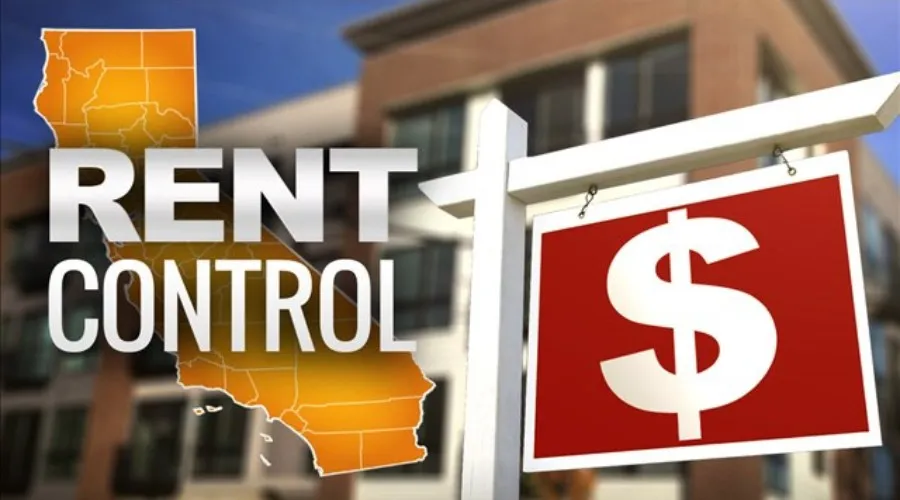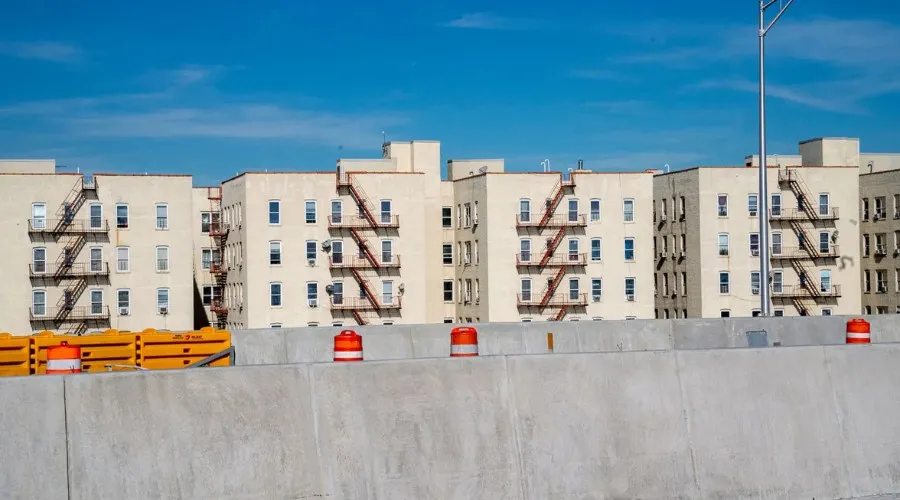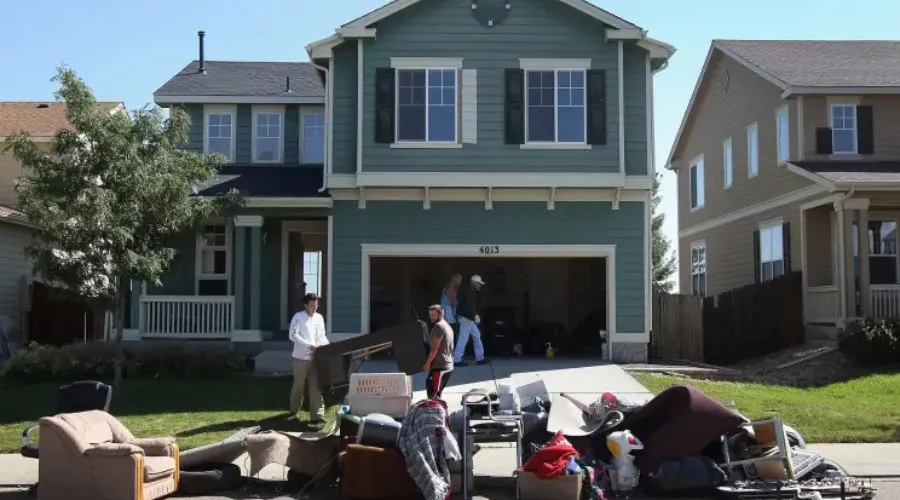California rent control is complex, with AB 1482 and local rules adding new challenges. Landlords and tenants must stay updated to avoid disputes and legal risks. This guide explains the latest changes and practical strategies to stay compliant. With LeaseRunner, landlords can simplify leases, screen tenants, and collect rent online.
Introduction to California Rent Control Laws
California is one of only three states with statewide rent control laws, alongside Oregon and Washington. In addition to this, the state allows cities and counties to adopt their own local rules. Rent control is mainly governed by the California Tenant Protection Act (AB 1482), which was enacted to limit excessive rent increases and protect tenants from unfair evictions. For a quick state overview, see the California landlord-tenant guide and state rent rules.
Implications for tenants
Rent control offers renters real protections. Here’s what it means for tenants living under California rent control laws:
- Predictable Rent Increases: Capped hikes ensure families aren’t blindsided by sudden rent spikes.
- Eviction Safeguards: After the first year, landlords must have good reasons to evict a tenant. This includes lease breaches or illegal activities. In no-fault situations, renters are typically entitled to relocation payments equal to one month’s rent.
- Housing Stability: Extra provisions, like longer notice periods for rent adjustments and anti-harassment protections, give tenants greater peace of mind. Recent updates even allow rental payment reporting to credit agencies, helping tenants build stronger financial records. Learn more in the California eviction laws overview.
Implications for landlords
For property owners, these laws bring both challenges and responsibilities.
- Limits on Rent Growth: Revenue potential is capped, which can feel restrictive when operating costs rise. Landlords can reset rent to market value only when a unit becomes vacant.
- Stricter Eviction Rules: Evictions now require solid documentation and compliance with notice requirements. Missteps can lead to lawsuits, fines, or extended disputes.
- Operational Adjustments: Navigating exemptions, coordinating with stricter local ordinances, and ensuring compliance add to administrative work. Some say these laws stop upgrades and investments. Others think they help keep tenants stable and lower turnover costs. See also: California eviction process step-by-step.
California State-wide Rent Control Laws
California statewide rent control is governed by the Tenant Protection Act (AB 1482), enacted in 2019. This law sets the foundation for rent limits and eviction rules across the state. More recently, SB 567 (2023) strengthened tenant protections, showing how landlord-tenant laws in California continue to evolve.
Annual rent increase limits
In California, landlords can only raise rent once per year, and the increase is capped at 5% plus the local CPI, not to exceed 10%. These limits under AB 1482 apply to the base rent only, excluding utilities or service fees. After a tenant moves out, landlords may reset rent to market value (vacancy decontrol), but the cap applies again for the next tenant.
For 2025, the allowable increase ranges between 6% and 9% depending on the region, but it will never surpass the 10% statewide maximum. Violating these rules can expose landlords to legal penalties or tenant lawsuits.
Which properties are covered by the Laws?
Similar to New York’s rent control and stabilization forms, the California Tenant Protection Act applies coverage based on buildings’ ages and conditions.
It mainly covers old buildings and units:
- Multifamily properties (3+ units) built more than 15 years ago.
- Duplexes constructed over 15 years ago, unless the owner lives in one unit.
- Single-family homes and condos owned by corporations, REITs, or LLCs with at least one corporate member.
Exemptions exist to promote development and ease the burden on small landlords. They generally cover newer properties, owner-occupied or individually owned homes, affordable housing, and certain special-use units.

Just-cause eviction requirement
California’s statewide rent control doesn’t just cap rent hikes—it also limits when landlords can end a tenancy. After a tenant has lived in a unit for 12 months, landlords must show a valid “just cause” to evict.
This rule aims to curb unfair or arbitrary evictions, giving tenants more housing stability. For landlords, it means stricter documentation and fewer options to end leases at will. For tenants, it ensures protection against sudden displacement.
Local Rent Control Ordinances in California
California rent control laws apply at the city level. Local rules can make rent rules and tenant protections even stricter. These policies limit how much rent can go up, set rules for evictions, and ensure tenant rights while allowing fair profits for landlords.
Understanding cities’ local rent rules
While statewide rent control sets the baseline, local ordinances add another layer of rules that vary by city. Below is a comparison of how major California cities regulate rent increases and evictions:
Why local rent control laws matter
Median rents in California exceed $2,800 in major cities. Rent control at the city level helps stabilize rents and reduce displacements. Studies show tenants under local rent rules are far less likely to face eviction or homelessness. These laws also preserve neighborhood diversity and protect essential workers from gentrification pressures.
For landlords, compliance ensures smoother relations with tenants and avoids costly legal battles. Critics say rent caps can limit housing supply. However, city rent control laws include exemptions for new development and ensure fair returns.

A checklist to determine a city’s local rent laws
Before assuming your property is covered, check these steps to confirm local rules apply:
- Pinpoint your location: Rules differ between a city and unincorporated county areas. For example, Los Angeles City and Los Angeles County follow separate local rent ordinances.
- Check official city websites: Look up “rent control,” “rent stabilization ordinance,” or “tenant protection program” in the municipal code. This is where most city council regulations are published.
- Contact your local rent control commission: Cities like Berkeley and San Francisco have rent control boards or housing departments. They can explain coverage, current rent increase policies, and exemption rules.
- Check state baselines first: California’s Tenant Protection Act (AB 1482) sets a statewide rent cap and just-cause rules. Local laws often add stricter rules on top of these landlord-tenant laws.
- Look up third-party guides: Resources like Tenants Together or Nolo.com summarize rent control and eviction laws city by city. Landlord associations also provide compliance updates.
- Verify property eligibility: Use city tools or registration portals to confirm your unit’s status. Exemptions often apply to single-family homes, new builds, or subsidized housing.
- Seek legal help if disputes come up: Tenants can reach out to legal aid groups. Landlords can talk to the California Apartment Association. Written confirmation helps avoid conflicts.
- Stay updated every year: Local rent boards adjust rent increase guidelines annually based on CPI. New laws—like SB 567 in 2025—regularly update the landscape of California rent control laws.
Exemptions from the California Rent Control Laws
Not every rental property in California is covered under rent control. Knowing which units are exempt from rent control can help landlords and tenants follow the rules. This understanding can prevent disputes. Below, we’ll break down the main categories of exempt properties from rent control under state and local laws.
Statewide exemptions under AB 1482
AB 1482 sets rent caps and just-cause eviction rules, but excludes certain properties. Key landlord exemptions to rent control include:
- Single-family homes and condominiums: Exempt unless owned by a corporation, REIT, or an LLC with at least one corporate member.
- Duplexes: Exempt if the landlord lives in one of the units as their main residence.
- Owner-occupied small buildings: Applies to properties with two or fewer units where the owner also lives on-site.
- New construction: Any residential building constructed within the past 15 years, measured from the date a tenant moves in.
- Affordable housing: Units with deed restrictions or rules that keep rents low for low-income tenants.
- Dormitories: University or college-operated housing.
- Mobile homes: Units governed by the Mobilehome Residency Law rather than AB 1482.
- Hotels and short-term rentals: Properties used for stays under 30 days.
- Commercial or mixed-use properties: Buildings not primarily used as housing.
These exempt property laws apply statewide unless a city has stricter rent control ordinances.
Local rent control exemptions
Many cities, such as Los Angeles, San Francisco, and Oakland, have their own rent control ordinances that existed before AB 1482. These rules often include different rent control exemptions by the city. A major influence is the Costa-Hawkins Rental Housing Act (1995), which limits how local rent control can be applied.
Common local exemptions include:
- Single-family homes and condos: Protected under Costa-Hawkins.
- Recently built apartments: In most cities, units built after 1995 are exempt. For example, Los Angeles exempts apartments built after October 1, 1978, while San Francisco exempts units built after June 13, 1979.
- Vacancy decontrol: Landlords can reset rent to market rates once a tenant moves out.
- Owner-occupied small properties: Duplexes or triplexes where the owner lives in one unit.
- Luxury or high-rent units: Some cities exempt properties above a certain rental threshold.
- Subsidized housing: Units under federal, state, or local affordability programs.
- Non-residential uses: Buildings primarily commercial or not intended for long-term housing.
Each city tailors its rules, so whether a building or unit is considered an exempt property from rent control depends on local housing codes.

Rent Increase Requirements for California Landlords
Understanding California rent control laws is critical for landlords before adjusting rent. The state has clear rent increase notification laws that protect tenants and ensure compliance.
Notice requirements for rent increase
In California, landlords must follow strict rent increase notification laws. Notices must be in writing. They should be delivered properly. Include the current rent, new rent, percentage increase, and effective date. They must also state if the unit is covered by AB 1482 or local rent control ordinances.
State rules require 30 days’ notice for increases of 10% or less, 60 days for more than 10%, and in some cities like San Francisco, 90 days. Rent can’t be raised mid-lease unless allowed by the contract. Invalid notices can make the increase hard to enforce. This can lead to fines, rent rollbacks, or tenant lawsuits for landlords.
How to increase rent in a legal amount
California law limits how much rent can be raised depending on whether the property is under statewide or local rent control. Landlords should carefully calculate increases using proper rent adjustment methods.
Formulas of Reasonable Rent Increases:
- Statewide cap (AB 1482): Maximum annual increase = 5% + CPI (Consumer Price Index), capped at 10%.
- Rent increase formula:
New Rent = Current Rent × (1 + (5% + CPI%)) - Example: If rent is $2,000 and CPI is 3%, the maximum increase is 8%. New Rent = $2,160.
If unsure, landlords should consult legal advisors for rent calculations to avoid penalties.
Situations when rent increases are not allowed
Even under California rent control laws, landlords cannot raise rent in certain cases:
- During an active fixed-term lease (unless the lease allows it).
- As retaliation for tenant complaints or requests for repairs.
- For discriminatory reasons against protected classes.
- If the property has unresolved health or habitability violations.
- During eviction moratoriums or other emergency protections.

Consequences of breaking the law
Violating state rent notice guidelines can carry severe consequences:
- Rent increases may be declared unenforceable.
- Tenants can sue for damages, including repayment of overcharged rent.
- Courts may order landlords to cover attorney’s fees.
- Local housing departments may impose fines or rent rollbacks.
- In rare cases, intentional violations could lead to misdemeanor charges.
Staying compliant with California rent control and notification laws helps avoid penalties. It also builds better landlord-tenant relationships by promoting clear and fair communication. Therefore, both sides should have a clear lease agreement.
Eviction Protections for California Tenants
Understanding eviction protections is key for both landlords and tenants in California. The Tenant Protection Act of 2019 (AB 1482) and local ordinances set the ground rules for when a tenant can be removed from a rental unit. Let’s break down what these protections mean in practice.
Types of California eviction protections
California law divides evictions into two categories: at-fault and no-fault.
- At-Fault: Examples include nonpayment of rent, serious lease violations (such as unauthorized subletting), creating a nuisance, or illegal conduct. In many cases, tenants must be given a chance to fix the issue before an eviction proceeds.
- No-Fault: Reasons include owner move-in, property withdrawal from the rental market (Ellis Act), demolition or major remodeling, or a government order. In these cases, tenants are usually entitled to relocation payments (often one month’s rent) and advance written notice of at least 60 days. Local ordinances may require more generous terms.
Statewide vs. local eviction
California rent control laws provide a baseline, but local governments often go further.
- Statewide (AB 1482): Applies to most multi-family buildings older than 15 years. It requires a valid reason after 12 months of tenancy. It also sets notice requirements and requires relocation help for no-fault evictions.
- Local ordinances: Cities like Los Angeles, San Francisco, Oakland, and Berkeley boost tenant protections. They might ask for higher relocation fees. They could also extend notice periods. Additionally, they may limit evictions for seniors, disabled tenants, and long-term residents.
Local laws often override AB 1482 if they are stricter. However, state exemptions, like Costa-Hawkins for new construction, still apply.
Recent updates to eviction protections in California
California is refining its rent and eviction laws. It often combines statewide rules with local ordinances.
- AB 1482 extensions: The just-cause protections under AB 1482 remain in place, with no sunset date changes.
- Post-COVID measures: Some cities, including Los Angeles, extended protections related to unpaid pandemic rent into 2024.
- Local ordinance changes: Cities like San Francisco and Oakland have made no-fault eviction rules stricter. They increased relocation help and limited some owner move-ins.
- Proposed legislation: Lawmakers are looking at bills to limit exemptions. This is especially true for corporate-owned single-family homes.
Tenants are encouraged to check city rent boards for the latest updates since local rules can evolve faster than state law.

Practical Tips for Landlords to Resolve Disputes with Tenants
Managing rental property in California can be challenging. With strict California rent control laws, landlords must carefully handle tenant disputes, rent increases, and compliance obligations. Below are practical ways to stay on the right side of the law and avoid costly mistakes.
1. Find a legal mediation service
When conflicts arise, turning to tenant dispute resolution services can save time and money. Mediation offers a neutral space for resolving disputes. This includes issues like rent increases, lease violations, or problems with habitability. This way, you can avoid going to court.
In California, many local governments provide free or low-cost legal mediation services:
- The San Francisco Rent Board assists with disputes over evictions, rent hikes, and housing services.
- The Los Angeles Housing Department supports landlords of rent-controlled properties through mediation.
- The Oakland Rent Adjustment Program helps landlords negotiate rent increases with tenants and resolve conflicts.
2. Look for a reliable landlord-tenant attorney
A qualified attorney in landlord-tenant law can help landlords handle disputes effectively. An attorney handles everything from drafting leases to evictions. They make sure to follow notice rules and rent control laws.
Benefits of hiring an attorney:
- Review and draft compliant lease agreements.
- Advise on just-cause evictions and legal rent increases.
- Represent landlords in unlawful detainer cases.
- Protect against claims of retaliation or discrimination.
3. Visit local rent boards
Cities with rent stabilization programs, such as Los Angeles, San Francisco, and Berkeley, have rent boards. These boards help with compliance, resolve rent increase disputes, and mediate between tenants and landlords.
What they offer landlords:
- Clear rules on allowable rent increases and eviction procedures.
- Petition processes for rent adjustments due to capital improvements or hardship.
- Mediation to handle tenant disputes without costly litigation.
- Educational workshops and counseling to keep landlords up to date.
Always check with your city or county housing office, as local ordinances often go beyond state laws.
4. Join a landlord association
Membership in landlord associations provides education, resources, and legal updates on evolving California rent control laws. Groups like the California Apartment Association or regional rental housing associations offer legal templates, workshops, and advocacy support.
Advantages:
- Access to compliant lease and eviction forms.
- Networking with other landlords to share strategies.
- Updates on laws like Costa-Hawkins and AB 1482.
5. Use online rent management tools
Digital platforms make it easier to manage leases, collect rent, and track notices. Tools like Avail and Buildium help automate reminders. They also store documents and manage tenant disputes with clear records.
For example, tools offer:
- Online rent payments with instant records.
- Automated reminders to prevent late payments.
- Lease templates tailored to California law.
- Tenant screening to reduce risks of non-payment.
As a landlord, if you need rent collection and other rent services in one place, LeaseRunner offers all-in-one solutions, from online rent collection to eviction check. The LeaseRunner team helps California landlords stay compliant with rent control laws easily. It also simplifies property management and minimizes the risks of property damage.
Conclusion
California rent control laws, with recent changes, strengthen rent stabilization across the state. Landlords must stay updated on state-wide rent control rules, eviction requirements, and notice deadlines. This helps them avoid legal issues and maintain good relationships with tenants.
FAQs
Q1. Do all cities in California have rent control laws?
No. Rent control ordinances vary by city. For example, Los Angeles and San Francisco have strict local rules. Other cities may only follow statewide protections under AB 1482.
Q2. How much can landlords increase rent under California rent control laws?
It depends on whether the property is covered by local ordinances or the state’s AB 1482 law. Generally, annual increases are capped at 5% plus the local CPI, with certain exemptions.
Q3. What happens if a landlord violates California rent control laws?
Landlords who fail to comply may face penalties, tenant lawsuits, or be required to roll back unlawful rent increases. In some cases, violations can also delay or invalidate an eviction process.



